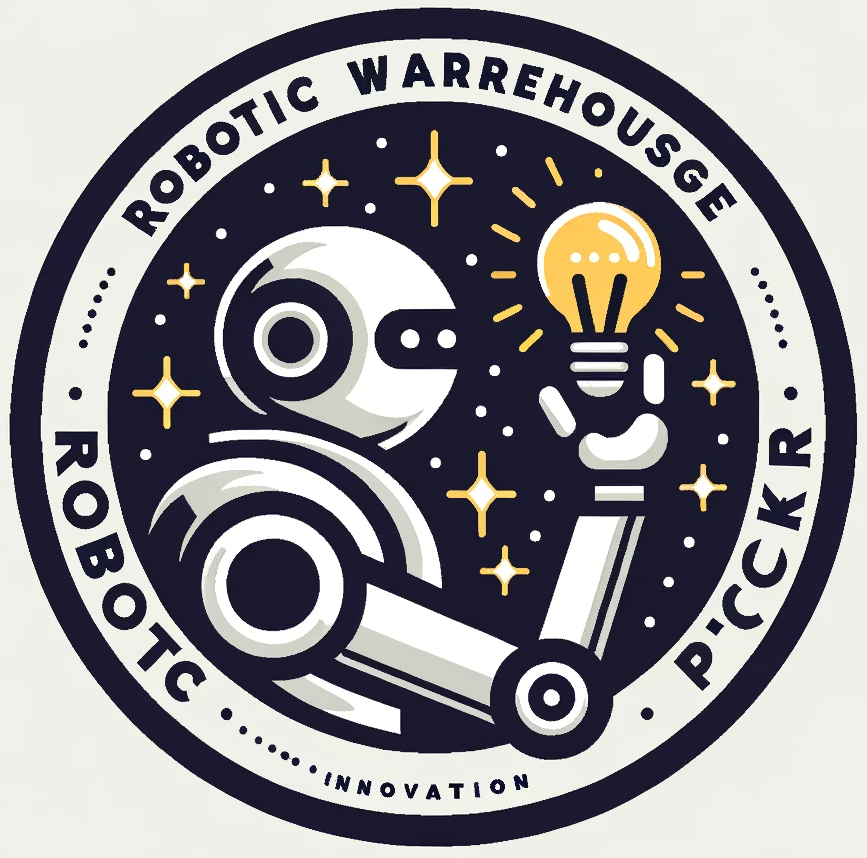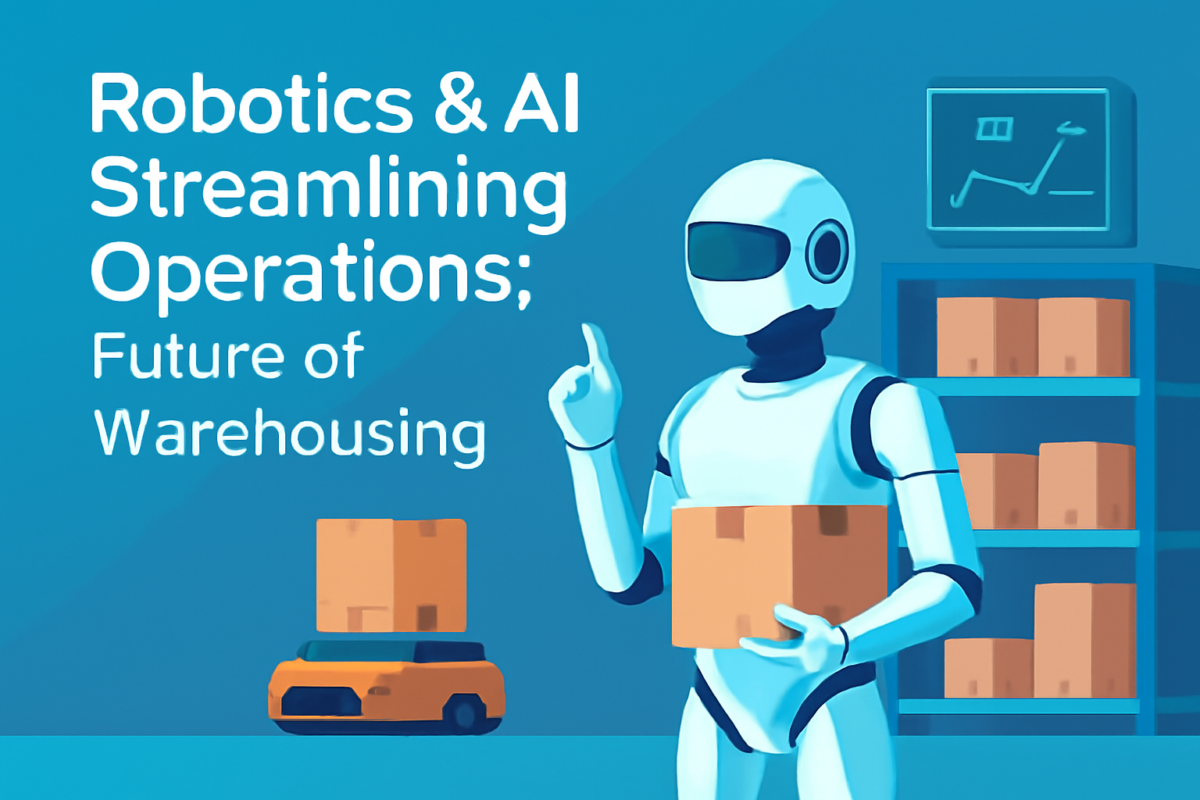Robotics & AI Streamlining Operations: Future of Warehousing
Introduction
The warehousing industry is undergoing a revolutionary transformation driven by advances in robotics warehouse technology and simpler robotics & AI logistics systems. As consumer demands increase and supply chains become more complex, the future of warehousing hinges on the seamless integration of automation and artificial intelligence. From robotic picker technology to fully automated warehouse systems, intelligent machines are optimizing processes to achieve unprecedented levels of logistics efficiency and accuracy.
Robotics & AI: The Backbone of Smart Warehouses
Smart warehouses rely on AI robotics warehouse solutions that combine physical robots with powerful AI algorithms. These technologies enable:
- Real-time inventory tracking
- Automated picking and sorting
- Predictive maintenance of warehouse equipment
This fusion of robotics & AI is at the core of robotic automation, driving smarter and faster fulfillment.
Key Innovations Shaping Warehouse Automation
1. Advanced Robotic Pickers
Modern robotic picker technology uses AI-driven vision systems and robotic grippers that can adapt to various shapes and sizes of products. This flexibility allows robots to pick and place items with high precision, even in cluttered or variable environments. The result is reduced picking errors and increased throughput, crucial for meeting the demands of today’s fast-paced supply chains.
2. Automated Warehouse Systems
These systems integrate robotics, conveyors, automated storage, and retrieval systems (AS/RS), and sophisticated warehouse management software to streamline every step of the logistics process. Automation reduces human error, improves safety, and optimizes space utilization, contributing to overall warehouse productivity.
3. AI-Powered Inventory Management
AI not only powers the physical robots but also processes vast amounts of data to predict inventory needs, optimize stock levels, and prevent stockouts or overstock situations. By analyzing historical trends and real-time inputs, AI algorithms facilitate proactive decision-making that keeps warehouses lean yet responsive.
Benefits of Robotics and AI in Warehousing
Increased Productivity
Robots excel at repetitive tasks and can operate continuously without fatigue. This around-the-clock operation drastically increases order fulfillment speed, allowing warehouses to handle peak demand periods without hiring temporary labor.
Enhanced Accuracy
AI-driven robots minimize picking mistakes by using advanced sensors and machine learning to identify items correctly. Accurate picking reduces costly returns, customer complaints, and inventory discrepancies.
Cost Reduction
Automation cuts down on labor expenses and improves operational efficiency. Over time, the investment in robotic systems typically leads to significant cost savings and improved ROI.
Scalability and Flexibility
Robotic systems can be scaled and reconfigured to fit warehouses of different sizes and layouts. This flexibility enables companies to expand operations or adapt to changing product mixes without major disruptions.
ALSO READ: Listen Up: Here’s How to Stop Your Warehouse Wasting Your Money
Real-World Applications
Robotics and AI have already demonstrated immense value across various industries:
- E-commerce: During high-demand seasons, AI-powered robots manage millions of orders with speed and accuracy, ensuring timely deliveries.
- Manufacturing: Robots assist assembly lines by delivering components and materials efficiently, reducing downtime.
- Retail Distribution: Automated warehouses support restocking and processing returns seamlessly, improving overall supply chain responsiveness.
Overcoming Challenges in Adoption
Despite the clear benefits, implementing robotics and AI in warehousing also presents challenges:
- High Initial Investment: The upfront cost for robotic infrastructure can be substantial, particularly for smaller businesses. However, decreasing hardware costs and cloud-based robotics platforms are making these technologies more accessible.
- Workforce Integration: Employees require training to work alongside robots and manage AI systems effectively. Upskilling the workforce is essential to maximize benefits.
- Data Security: As warehouses become more connected, ensuring the security of data and robotic networks is paramount to prevent cyber threats.
Looking Ahead: The Future Landscape
Collaborative Robots (Cobots)
Future warehouses will see more collaborative robots, designed to work safely alongside human workers. These cobots can take over repetitive or physically demanding tasks while humans focus on strategic and supervisory roles.
AI-Driven Predictive Logistics
AI will continue advancing to predict supply chain disruptions, optimize delivery routes, and dynamically adjust warehouse workflows in real-time.
Cloud-Based Robotics Control
Cloud platforms will enable centralized control of multi-location warehouse networks, providing greater visibility and coordination for global logistics operations.
Integration with IoT and Blockchain
The convergence of AI, robotics, IoT sensors, and blockchain technology will create fully transparent and efficient supply chains. Real-time tracking and immutable records will boost trust and reduce losses.
Image Prompt 4: Visual concept of interconnected warehouse robots controlled via a cloud-based platform, displaying data streams and blockchain icons in a futuristic interface
Frequently Asked Questions
What is the future of robotics in warehousing?
Robotics will become more autonomous, intelligent, and integrated with AI to handle complex logistics tasks efficiently.
How does AI improve warehouse operations?
AI enables predictive analytics, real-time decision-making, and automation of repetitive tasks, enhancing speed and accuracy.
Can robotics and AI be implemented in existing warehouses?
Yes, many systems are designed for seamless integration with current warehouse management software and infrastructure.
Are robotic systems cost-effective?
While initial investments can be significant, the long-term savings in labor, errors, and efficiency gains often justify the expense.
What role do smart warehouses play in logistics?
Smart warehouses use connected technologies to optimize every stage of the supply chain, reducing downtime and boosting customer satisfaction.
Conclusion
The integration of robotics and AI is shaping the future of warehousing by enabling smarter, faster, and more efficient operations. Businesses adopting these technologies are poised to gain a competitive edge in an increasingly demanding market. As these technologies mature, warehouses will become more adaptive, sustainable, and customer-centric, paving the way for a new era in logistics.
Take the Next Step in Warehouse Innovation
Ready to future-proof your warehouse?
Contact us today to explore how AI-driven robotic solutions can streamline your operations and boost efficiency.

